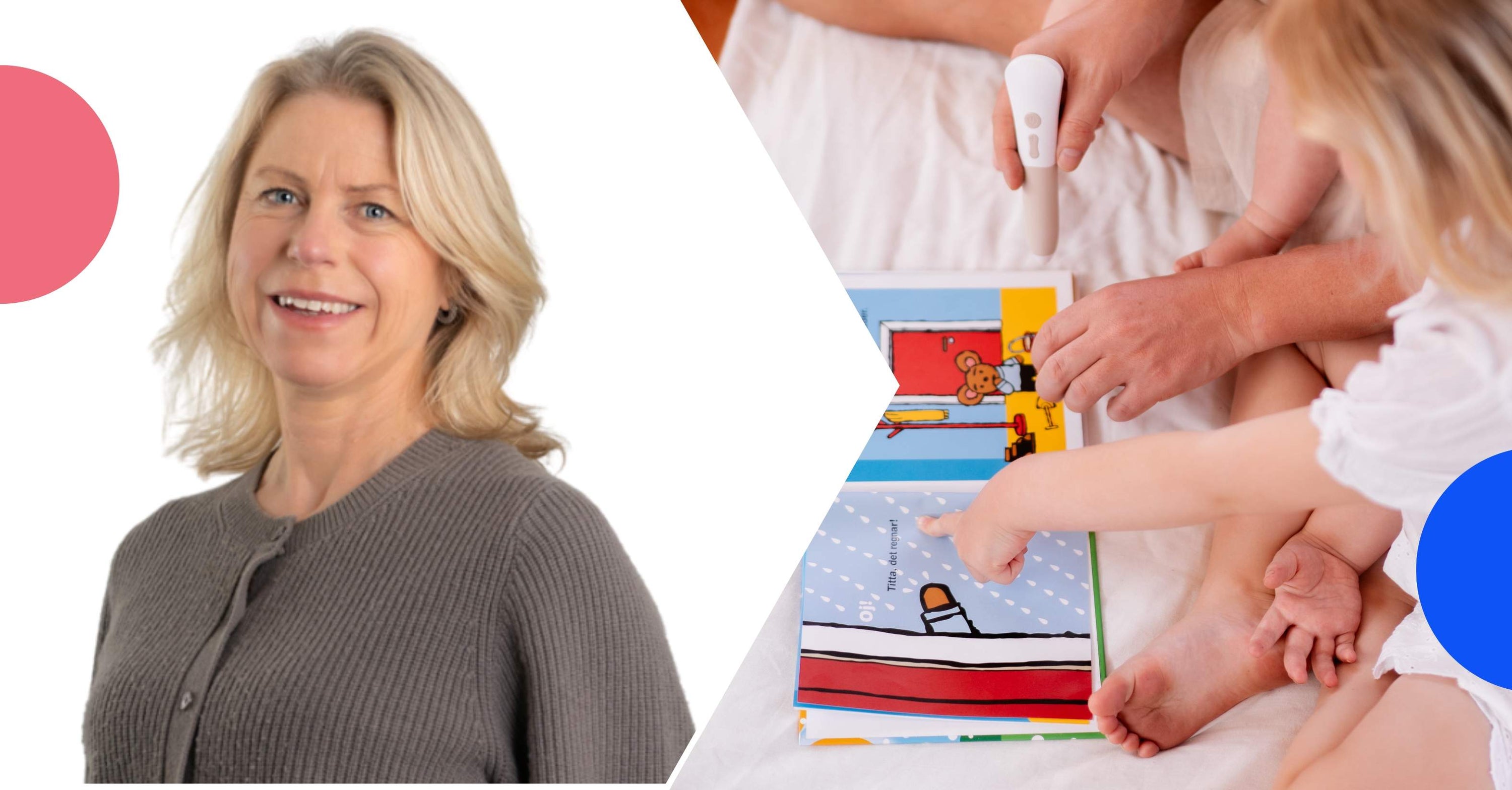
Preschool teacher Karin: When language doesn't come – how you can support a child who has fallen behind in language development
Language development occurs at different rates for different children. Some children pick up new words and expressions quickly, while others need more time and support. Research shows that children who are exposed to a rich and varied language early in life are better placed to develop both reading comprehension and vocabulary (Hart & Risley , 1995). For children who are lagging behind, it is important to create a language-rich environment where conversation, reading aloud and interaction are a natural part of everyday life.
Why some children develop language more slowly
There are many reasons why a child may have slower language development. This may be due to congenital factors, a lack of linguistic stimulation, or the child growing up in a multilingual environment where several languages share the same space. However, having access to multiple languages is a great asset and something that will benefit the child's linguistic and cognitive development in the long term . Studies show that children with language disorders or other functional variants often need special strategies to strengthen their language skills (Bishop, 2014). Identifying these needs early and adapting the support can be of great importance for the child's language development.

How to support a child who struggles with language
✔ Interactive reading aloud
Reading aloud is one of the most effective methods for strengthening children's language comprehension. Research shows that interactive reading aloud, where the child is engaged through questions and conversations, has a great effect on vocabulary and reading comprehension ( Whitehurst et al., 1988 ). By allowing the child to actively participate and relate the story to their own experiences, reading becomes more meaningful and educational.
✔ Combine listening and reading
Children learn best when they are exposed to language through multiple senses. Both hearing and seeing words strengthens the connection between sound and writing. Tools like Readioo can support this process by allowing the child to follow along with the text while they hear the story. According to Chall (1983), this is especially important in early reading development, where children begin to understand that written language corresponds to spoken language.
✔ Develop language through play
Language develops best in a stimulating environment where the child is allowed to use it in a playful way. Rhymes, rhymes and songs are excellent tools for strengthening phonological awareness, which is crucial for reading and writing development ( Goswami , 2001 ). By using songs and language games, a child’s language development can be strengthened in a natural and engaging way.
✔ Reduce passive screen time – choose active alternatives
Research shows that children who have a lot of verbal interaction with adults develop their language faster than those who spend a lot of time in front of screens (Dickinson & Tabors , 2001). A screen-free alternative like Readioo offers an engaging way to listen and read without screens taking over their attention. By letting the child listen and follow along with the text, they get a more active language learning experience.
Language development is a journey – support makes a difference
Strengthening a child's language skills is about creating an environment where conversation, reading and curiosity are at the center. By using methods such as interactive read-alouds, language-stimulating play and tools like Readioo , we can give children better opportunities to develop their language at their own pace.
Even if you as a parent do everything you can, you may still feel concerned about your child's language development. If this is the case, you can talk to the preschool or contact the Swedish Centre for Speech and Language Therapy or a speech therapist.
Small steps in everyday life make a big difference. By reading, listening and talking together, we not only build a stronger vocabulary but also greater self-confidence in the child. Language development is a journey – and with the right support, every child can find their own path.
---------------
Karin Gifvas is a preschool, primary school and special education teacher with deep expertise in reading, language and writing development. With extensive experience working with digital services and products, she has a strong focus on creating accessible and inspiring learning environments. Through her work, she strives to give all children the best conditions to develop a rich language, a strong desire to read and a curiosity for learning.
References
Bishop, DVM (2014). Ten questions about terminology for children with unexplained language problems . International Journal of Language & Communication Disorders, 49(4), 381–415. https://doi.org/10.1111/1460-6984.12101
Hart, B., & Risley , TR (1995). Meaningful Differences in the Everyday Experience of Young American Children . Paul H. Brookes Publishing Co.
Whitehurst , GJ, Falco , FL, Lonigan , CJ, Fischel , JE, DeBaryshe , BD, Valdez- Menchaca , MC, & Caulfield , M. (1988). Accelerating Language Development Through Picture Book Reading . Developmental Psychology , 24(4), 552–559. https://doi.org/10.1037/0012-1649.24.4.552
Goswami , U. (2001). Early Phonological Development and the Acquisition of Literacy . In SB Neuman & DK Dickinson (Eds.), Handbook often Early Literacy Research (pp. 111–125). Guilford Press.
Chall , J. S. (1983). Stages of Reading Development . McGraw-Hill.
Dickinson, DK, & Tabors , PO (2001). Beginning Literacy with Language : Young Children Learning at Home and School . Paul H. Brookes Publishing Co.

